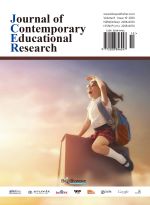Abstract
The Moral and Law course serves as a critical platform for educating university students about ideals and beliefs, and it has a significant impact on the effectiveness of ideals and beliefs education. This paper establishes a mechanism through which Moral and Law course teaching influences the effectiveness of ideals and beliefs education and conducts an empirical evaluation. The results reveal that factors such as the relevance and applicability of the teaching content, the integration of theory and practice, the innovation, interactivity, and participation of teaching methods, as well as classroom atmosphere, teaching facilities, and campus culture, all have a significant positive impact on the effectiveness of ideals and beliefs education for university students.
References
Liu A, 2021, Review and Prospects of Ideological and Political Education Policy Since the Reform and Opening-Up. Observation and Reflection, (10): 27–37.
Liu P, 2022, An Analysis of the Institutionalization of Practical Teaching of Ideological and Political Theory Courses in Universities in the New Era. University Education, (8): 123–126.
Bao W, 2021, An Analysis of the Integration of Reform and Innovation in Ideological and Political Theory Courses in the New Era—With Patriotism Education as an Example. Ideological Education Research, (9): 141–144.
Xu G, Wang S, 2022, The Nature of Vocational Undergraduate Education and Its Course Teaching Models. Educational Research, 43(7): 104–113.
Chen L, Chen Y, 2023, Chinese-Style Modernization: The Theme of Ideals and Beliefs Education for University Students on a New Journey. Ideological Education Research, (11): 109–116.
